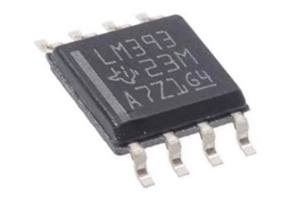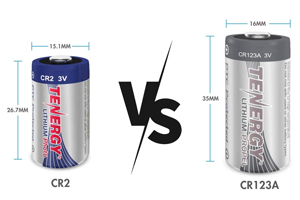Power Cords in Details: Types, Uses, and How to Choose the Right One
Author:admin Date: 2025-08-15 08:15 Views:504
Introduction
A power cord or electrical cord is a cable used for connecting electrical appliances to a power source such as a wall outlet. The power cords allow electricity to flow from the power source to the device so that it can function.
Most of the time, the power cord will be a flexible cable with a plug on one side that connects to the outlet and a connector that is attached to the appliance to deliver the power.
Basic Components of Power Cords
There are different types of power cords, each having unique features, but there are things that will be the same. This includes the components.
Whether it is a PS5 power cord or an Xbox 360 power cord, they all have conductors. These are the wires inside the cord that carry the electrical current. Aluminum and copper are common materials used for making conductors because they are good conductors.
There is also the insulation, the layer of plastic surrounding the conductors. Insulation is important to prevent electrical shock or short circuits when touched.
The plug is what connects the cable to the outlet or power strip.
A connector is also available to attach the power cord to the appliance. Depending on the type of power cord you are working with, there are standard connectors and specialized connectors.
Some power cords also come with a strain relief mechanism. This mechanism allows for attaching the cord to a device to prevent damage from pulling, twisting, or bending.

Power Cords Voltage and Current Ratings Explained
Voltage and current ratings are very important for those who want to buy power cords. They can determine if the AC power cord has the capacity to handle the voltage or current a device draws from the mains power supply.
The voltage rating of a power cord means the maximum voltage it can handle safely. For example, a standard North American PC power cord is rated for 120V.
What happens when you use a 120V cord on a device that requires 220V? The device draws too much power, which the cord cannot handle. This might lead to the cord failing, which can be a safety hazard.
Current rating or ampacity is also important. It indicates the maximum current the power cord can carry safely.
A power cord may be rated for 10A so make sure that is the maximum it carries to ensure safety. Having too much current passing through it will lead to overheating. As such, always look at the current rating of the device and pair it with the right power cord.
Types of Power Cords
Power cords can be categorized differently depending on the application, connector type, and length or flexibility.

By Application
In this case, you will come across household appliance power cords. These cords are designed to work with standard household devices. You will find options such as Samsung TV power cords, power cords for kitchen appliances, washing machines, and refrigerators.
The other option will also get power cords for computers and related electronics. Such electronics are designed to power computers, monitors, and other devices. They will have IEC C13/C14 or NEMA 5-15P plugs.
You may also come across industrial and heavy-duty power cords. These are cords built for demanding environments. They will typically use heavy-gauge wiring and specialized connectors that can handle more power needs.
By Connector Type
The connector type can also help us understand which power cord to use for different applications. The NEMA connectors are the standard power cord connectors in North America. The standard is defined by the National Electrical Manufacturers Association or NEMA. You will come across different connectors such as NEMA 1-15, NEMA 5-15, and NEMA 6-15.
IEC, or the International Electrotechnical Commission, has international standards for power connectors. Common IEC connectors include the C13/C14 and C19/C20.
There are also specialty connectors. In this case, the connectors are designed for specific applications. These can include medical devices, audiovisual equipment, or industrial machinery. They might not always be compatible with the standard NEMA or IEC connectors.
By Length and Flexibility
You will encounter short and long power cords. The cords come in various lengths to suit different needs. Short cords are great for connecting devices close to the power outlet, while long cords provide more flexibility.
A good example is when you need to charge a smartphone; a short cord is good enough. However, when vacuuming your house, a long cord is better so that you can clean a large area without switching to a different outlet.
The other options are retractable and coiled cords. These cords offer a space-saving solution since they can easily be retracted or coiled while not in use. This is particularly important for tools and equipment that need to be moved around.
Power Cord Materials and Build Quality
The TV power cord or any other type needs the right conductor materials to function properly. Copper and aluminum are the main conductor materials because they deliver excellent performance.
Copper is favored because it offers superior electrical conductivity, resistance to corrosion, and strength. It is also less prone to expansion and contraction. This reduces the risk of having loose connections and overheating as well.
Even though copper can have a high initial cost, the reliability and safety generally offset the cost.
Aluminum is another alternative as a conductor material. It is lighter and more affordable. However, it has a high electrical resistivity. This means you need a larger aluminum conductor in terms of cross-sectional area to carry the same current as copper. Also, aluminum is susceptible to oxidation and expansion, leading to connection issues and sometimes overheating.
How about insulation materials?
PVC (polyvinyl chloride) is the most common insulation material for power cords. The material is good for computer power cords and other types because of features such as flame retardancy, low cost, and chemical resistance. It is also good for indoor applications and can handle moderate mechanical stress. PVC insulation will offer good protection against moisture and abrasion as well.
Rubber is another good material for insulating power cords. Various types of rubber exist, including silicone, SBR, and Neoprene. These materials offer great flexibility, good electrical properties, and high-temperature resistance. They are mostly used in industrial settings where durability and flexibility are important.
Thermoplastic Elastomer or TPE is another material that is used as insulation for power cords. TPE is a combination of plastic and rubber. The result is having a material that offers good temperature resistance and resistance against wear and UV radiation.
Safety Considerations When Using Power Cords
Whether it is an Xbox Series S Power Cord or a C13 power cord, they all need to meet certain standards so that they can deliver on the right performance and safety as well.
Safety Certifications
The UL (Underwriters Laboratories) is one of the key certifications that show the product has been tested to meet the specific safety standards in the industry. Having a power cord with the UL mark means the power cord meets the right safety requirements for it to work well in a certain application.
The other important certifications include CSA (Canadian Standards Association) and CE (Conformité Européenne). Whenever you see such certifications, you can be sure the power cord is quite good at safety and performance.
Avoid Overloading
It is tempting to connect as many devices as possible to an extension power cord. However, overloading the power cord can cause overheating issues.
It is also important to check the wattage rating. Make sure the power cord’s wattage matches the device’s requirements.
Try to keep the cords away from heat sources such as heaters and radiators. This prevents damage to the insulation material.
Choosing the Right Power Cord for Your Needs
Whether you are buying a DC power cord or a dishwasher power cord, you need to consider a couple of things before purchasing. Here is what you should do:
Device Compatibility
Voltage and amperage are important when choosing a power cord. Your device will have information about the voltage and current required. So, consider them when choosing the power cord.
Ensure the plug type is also in accordance with the device’s input needs. If you have to make replacements, look at the design of the previous cable.
Indoor vs. Outdoor
Look at how the cord is designed to be used. Some models are best for indoors, while others can work well for outdoor applications.
The indoor cords are rated for lower durability and will not be the best for harsh environmental conditions. The alternative is to use outdoor cords, which can withstand UV exposure, moisture, and physical wear and tear.
Length and Gauge
The proper length can often determine how you use a device. To avoid excessively long extension cords, make sure that the cord length is sufficient for your needs.
The gauge or wire thickness can also determine where best to use the power cord. Having a smaller gauge number means the wire is thicker and can handle higher power loads. It is best to use the correct guage depending on the device’s amperage and the cord’s length.
Power Capacity
The wattage is also a crucial factor when choosing a C13 power cord. Divide the device’s wattage by the voltage to find the required amperage. This will guide you to find the right cord that can handle the need current level.
We recommend oversizing the cord. This means it should have more current capacity than the device’s needed amperage.
Brand Reputation and Cost
Some companies are known for making high-quality power cords. It is best to look into a power cord’s brand reputation to determine if it is worth spending money on. Also, consider the cost to see if the cords offer value for money.
Conclusion
There are multiple power cords in the market. They are built differently from various manufacturers. Make sure that you only get one that works great for your needs. Factors such as voltage and current ratings are important so that the power cord can deliver on the right power needed by a device without overheating or failing. Proper maintenance may be necessary to keep the power cords in great condition.
Please send RFQ , we will respond immediately.
Frequently Asked Questions
How do you know that a power cord is compatible with a device?
Check the device’s voltage, connector type, and amperage. Ensure the power cord matches the specifications indicated in the device’s manual or label.
Is there a difference between DC and AC power cords?
AC power cords are mostly used to connect household electricity to power different types of appliances. DC power cords are used to connect battery-powered devices and electronics.
How long should power cords be?
It all depends on the application. Each application will have a recommended length. For example, you will need a longer cord when running a vacuum compared to powering a TV.


